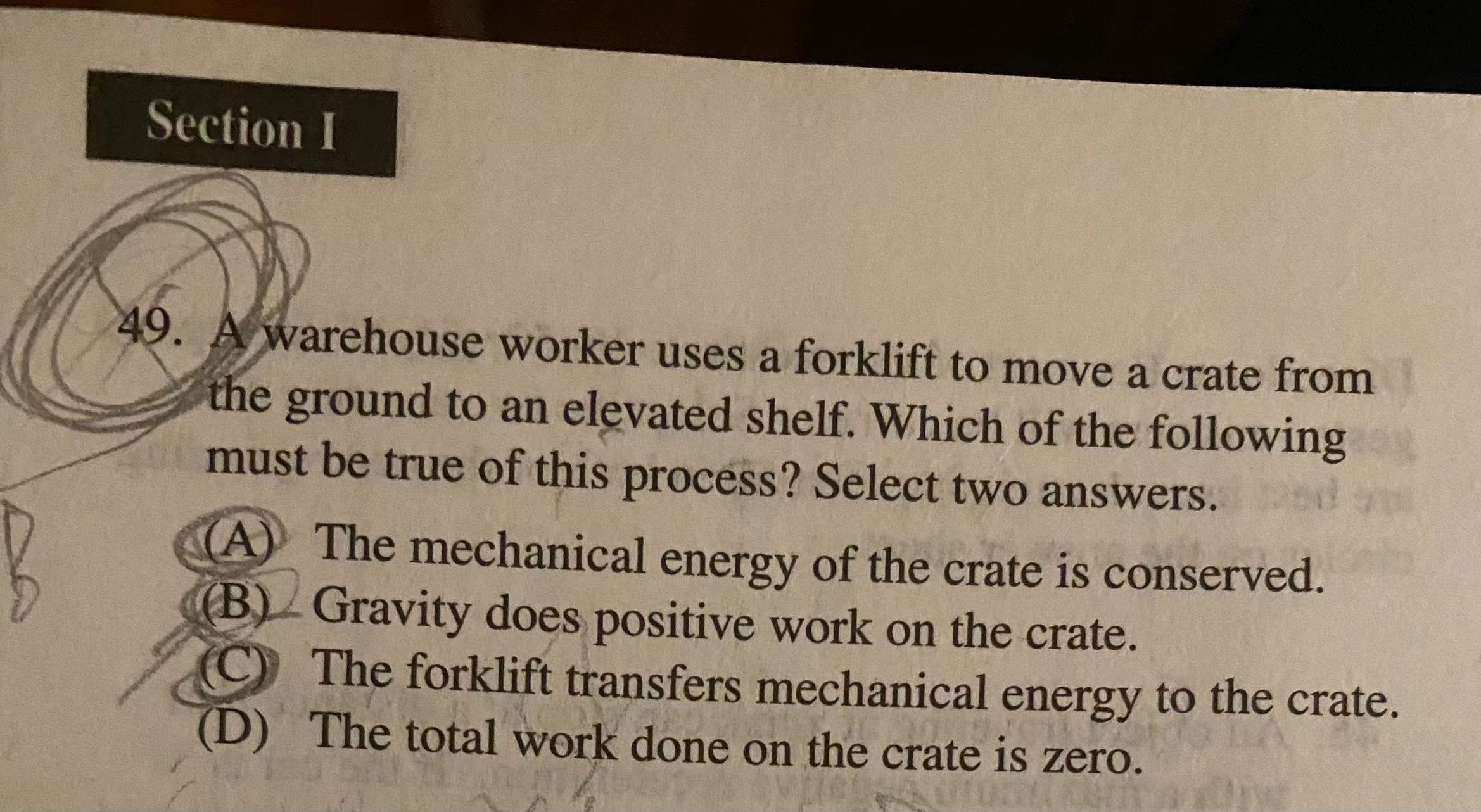Online Course Discussion Forum
AP physics 1 question
For number 49, why is D the total work done on the crate is zero? The analysis said that because it has no change in kinetic energy so its zero. Isn't it need to consider the change in potential energy?
For number 17, I don't really understand "proportional" and the question.
And number 18, that D option is really weird. I don't understand D.
Here's some thoughts. Hope they help!
49: Since this problem is a "select two answers" you can use the other answer choices as a hint for what the question is asking about. (A)+(C) both talk about mechanical energy. (B)+(D) talk about work. (A)+(C) are fairly clearly not both true, with (C) being correct as the forklift does (positive) work on the crate lifting it higher. Note the forklift is doing the work, (B) talks about gravity doing work, and (D) talks about total work. For (B), note gravity pulls down, while the object moves up, so the work done is negative. Thus, the work done by gravity cancels the work done by the forklift, meaning (D) is correct.
Note for 49: I would say answer choice (B) gives the biggest hint for solving the problem. Discussion of gravity doing work should be thought of as important, because it means we need to be careful when discussing potential and thus mechanical energy. Why? Because the main idea of potential energy due to gravity is to avoid having to think about work done by gravity.
17: Proportional means a linear relationship. For example, if y=k*x, we would say y is proportional to x. For this problem, it means that drag force (basically air resistance / friction when falling) gets larger as the speed of the object gets larger. When falling, an object can reach a fast enough speed that this drag force equals the force of gravity, so the object no longer accelerates. This is called the terminal speed. Since this speed is never reached, the object is always accelerating (speed is increasing) but since the drag force grows as it speeds up, the accelerating is decreasing.
18: First off, process of elimination can be used to see the answer must be (D). (A) is wrong because centrifugal force isn't a real force, furthermore, remember action/reaction pairs are forces on DIFFERENT objects. For example, the normal force is the floor pushing up on an object to counteract the object pushing down on the floor. (B) is wrong as velocity and acceleration are perpendicular for circular motion. Furthermore, they are both always changing direction, so (C) is wrong.
For understanding (D), here "falling towards the center" means "accelerating due to gravity". Just think of how you might describe "falling" in terms of physics. I can't think of any good explanation other than "the only force acting on you is gravity pulling you down", which means "accelerating due to gravity". Thus, (D) is the correct answer.


社交网络